Research results
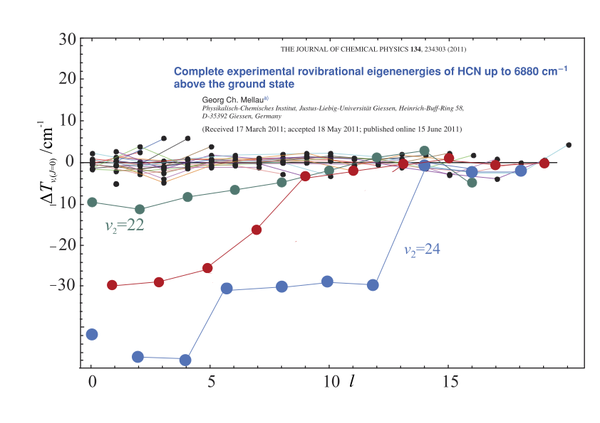
|
Prediction of the vibrational angular momentum dependent dip of the vibrational energies for linear molecules as the vibrational excitation approaches the transition state (J. Chem. Phys., 134, 234303 (2011)) |
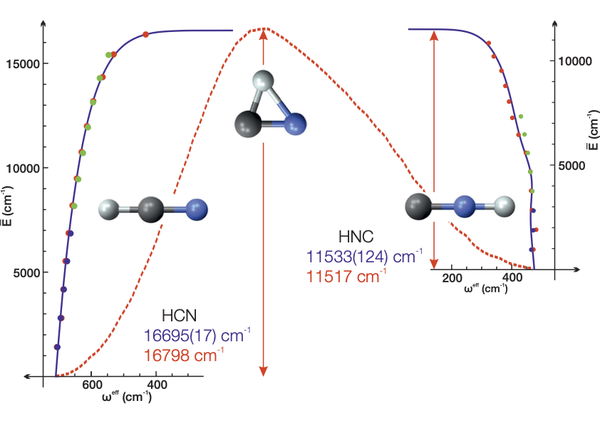
|
Spectroscopic Characterization of Transition States
In a paper published in 2015 (“Spectroscopic Characterization of Isomerization Transition States”,Science, 350, 1338 (2015)), we show how it is possible to extract the chemically relevant saddle point energy from spectroscopic data. By examining the pattern of vibrational levels in the spectrum of an isomerizing system (see G. Ch. Mellau J. Chem. Phys., 134, 234303 (2011)) , we have discovered a new way to precisely measure the energies of transition states. The technique also reveals information about the structure and vibrations of the transition state, which gives insight into the mechanism of the isomerization. It was not previously known that the mechanism of a chemical reaction could be deduced from spectroscopic data. |
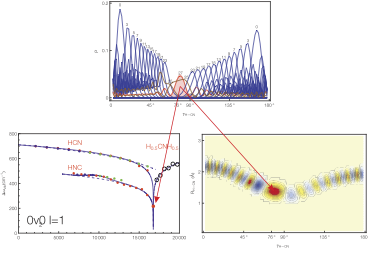
|
Saddle Point Localization of Molecular Wave- functions
In a theoretical work (Scientific Reports, 2016 ) based on the analysis of the highly excited bending states of the [H,C,N] molecular system I identified the bend- ing states nearest to the saddle points of the effective, adiabatic-bend potentials for different stretch excitations. Furthermore, I have shown for the first time that the molecular wavefunctions of these eigenstates are localized at the transition state. These special states play an important role in the internal dynamics at chemical relevant excitations and in the spectral patterns of the transitions states we may observe in the spectra of molecules between very highly excited states. This paper reports my analytical model for the eigenvalues in a symmetric double minimum potential based on the correspondence principle - so far the single model for this fundamental case of the quantum mechanics. |
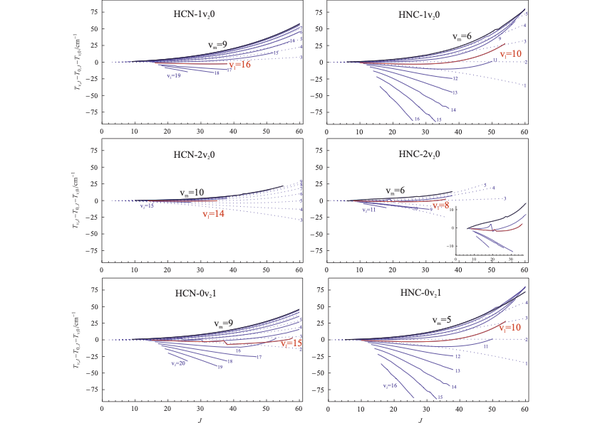
|
The turnaround of the rotational eigenenergies
New internal dynamic effect for HCN (and probably general to HAB linear molecules): effect of highly excited vibrational momentum. |
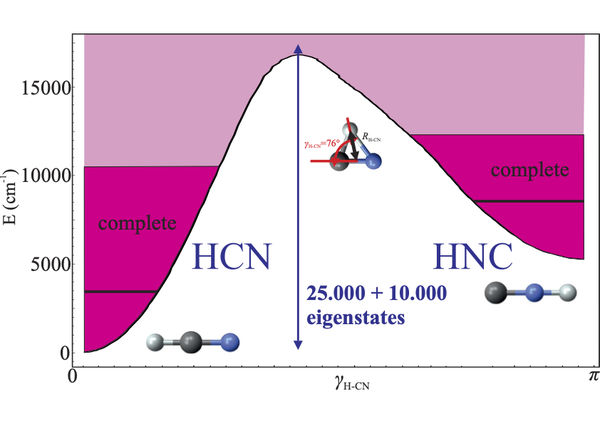
|
Molecular Eigenstates ⇐⇒ Potential Energy Surface
First complete eigenstate based description of a polyatomic molecular system up to 10000 cm −1 above the potential minimum. My work on HCN and HNC (12 papers) represent the most complete and extended set of eigenstate based description of a polyatomic molecular system |
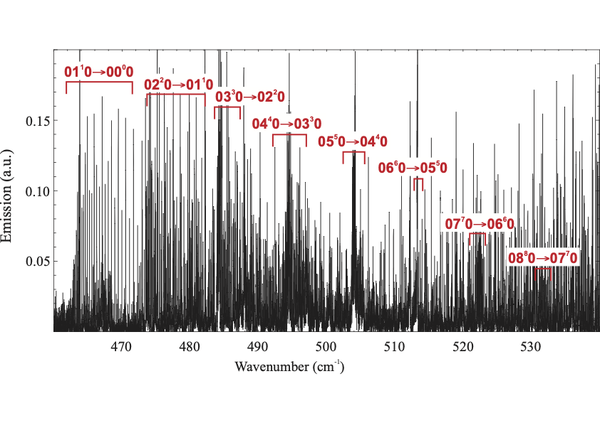
|
HOTGAME Spectroscopy
Introduction of a special highly sensitive hot gas molecular experimental spectroscopy setup for the detection of the highly excited bending states of small molecules. |
